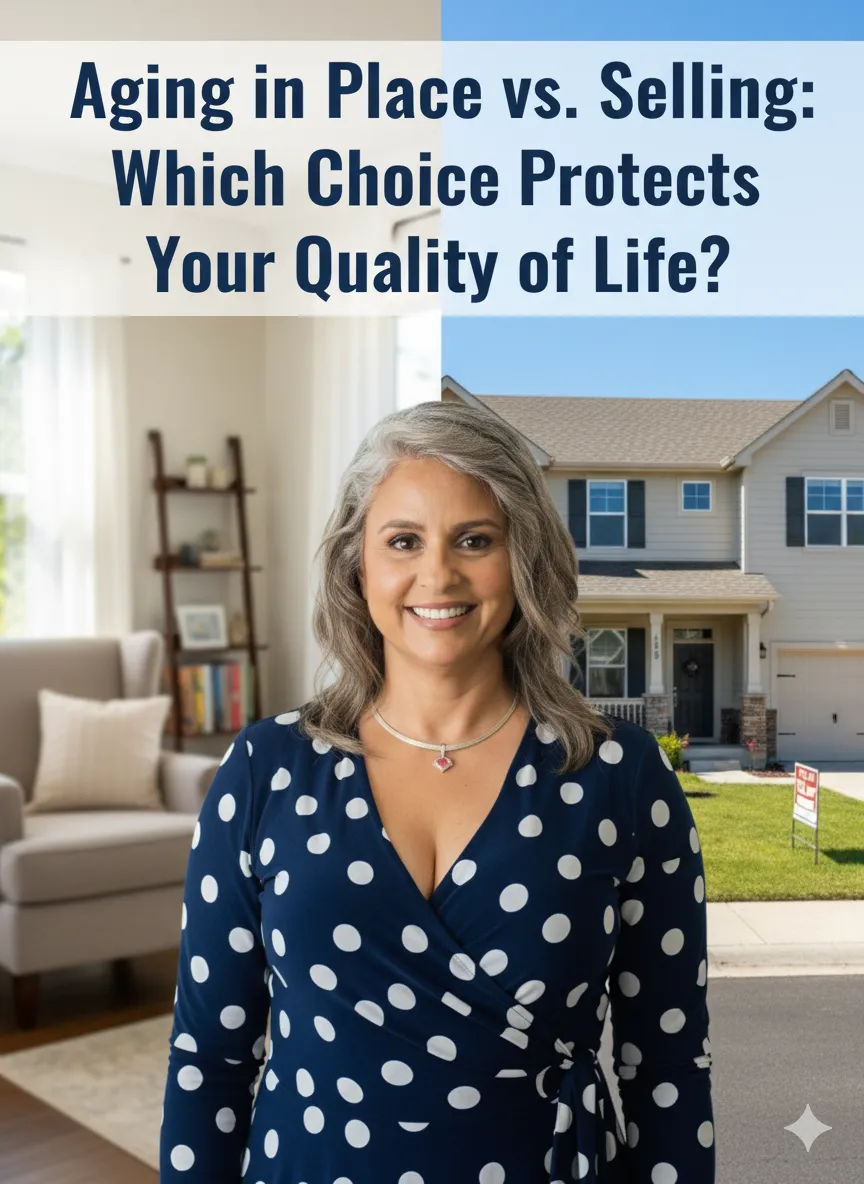
Aging in Place vs. Selling: Which Choice Protects Your Quality of Life?
The Big Question Many Families Face
For many seniors, the biggest decision isn’t just about money — it’s about home.
Do you use a reverse mortgage to stay put and age in place? Or do you sell the home, downsize, or rent to reduce expenses?
It’s not an easy choice. Both options affect not just your finances, but your independence, lifestyle, and family legacy. Let’s break it down in plain English.
Why “Home” Matters So Much
Think about it: your home isn’t just four walls. It’s the kitchen table where birthdays were celebrated, the garden you tended, the neighbors you trust.
That emotional attachment is powerful. Many seniors say, “I want to stay in my own home as long as possible.” And with the right planning, it can be done.
But sometimes the house itself becomes a burden — too many stairs, too much maintenance, or simply too expensive to keep up. That’s when selling becomes part of the conversation.
The Case for Aging in Place with a Reverse Mortgage
Here’s what staying put can look like:
No monthly mortgage payment (you’re still responsible for taxes, insurance, and upkeep).
Access to equity for things like in-home care, medical bills, or home modifications.
Independence — you’re still the owner, and the home stays in your name.
For some, this is the perfect solution. A reverse mortgage can fund grab bars, ramps, bathroom renovations, or even in-home caregivers. It allows you to enjoy your home safely while protecting cash flow.
The Case for Selling and Downsizing
On the other hand, selling might make sense if:
The house is too large, costly, or physically challenging to maintain.
You want to move closer to children, medical care, or community.
You prefer to free up all of your equity at once and invest or save it.
Downsizing can reduce ongoing costs and responsibilities. For some, the relief of no maintenance and lower monthly bills outweighs the pull of the old house.
Real Story
One client I worked with, Jim, was determined to stay in his home. His daughter wanted him to sell and move into a condo closer to her.
After looking at the numbers, Jim realized that with a reverse mortgage he could afford in-home care and modify the house to suit his needs. That compromise gave him the independence he wanted, while giving his daughter peace of mind.
Every family’s story is different. The key is finding balance between emotional comfort and financial security.
Questions to Ask Yourself (and Your Family)
Does the home still fit your physical needs?
What’s the cost to stay vs. the cost to sell and move?
How important is keeping the home in the family?
Would a reverse mortgage provide enough relief, or would selling be more practical?
Want a simple way to weigh your options? Download our free ‘Aging in Place vs. Selling Checklist’ to walk through finances, health, and legal considerations step by step.” Download Here
Key Takeaway
There’s no “one size fits all.” Some seniors thrive by aging in place with the help of a reverse mortgage. Others find freedom and relief in selling.
The right choice is the one that protects your quality of life — physically, emotionally, and financially.
Next Steps
Curious which path is best for you or your parents? Let’s walk through the numbers together.
📅 Book a free 15-minute call here: https://interconnectmortgage.com/calendar
Disclaimer
This content is for educational purposes only and not a commitment to lend. Interconnect Mortgage — NMLS 1720882. Check licensing at NMLS Consumer Access
